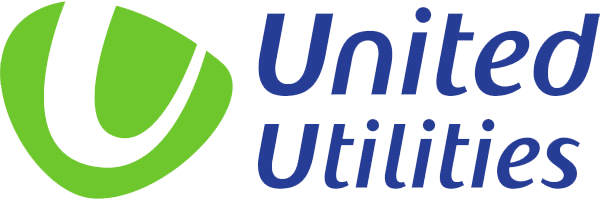Phosphorus Removal Enhancement Programme (2021)
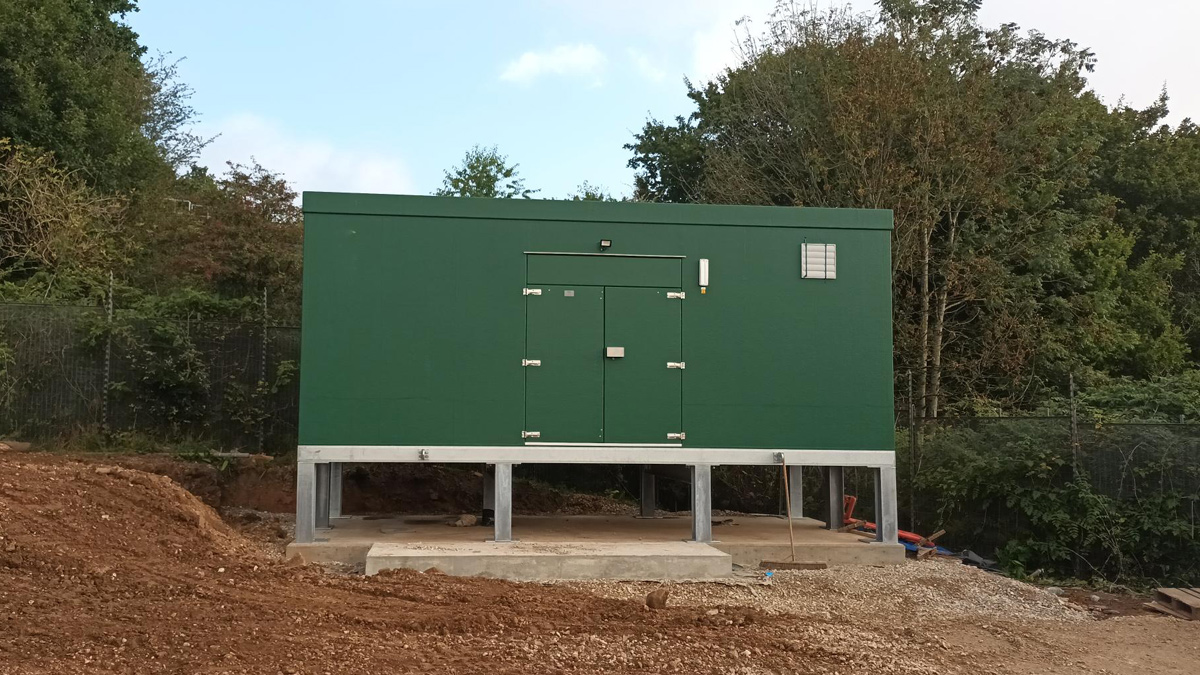
Worsley WwTW detention tank MCC DfMA assembly - Courtesy of Advance-plus
The Phosphorus Removal Enhancement Programme (PREP) Batch is a group of projects within United Utilities. These projects provide improvements delivering the Environment Agency (EA) Water Industry National Environmental programme (WINEP) outputs for a future population growth based on a 2035 design horizon. With a focus on ensuring the lowest ‘whole life cost’ solution, the team recognized the opportunity to employ a phased approach along with repeatable template solutions. They have both developed solutions within the batch and drawn on solutions from the wider programme of work to meet the lowest whole life cost.
Treatment works details
The PREP Batch consists of improvement works to meet tightened final effluent total phosphorus permits at five existing wastewater treatment works (Bury, Worsley, Rochdale, Tyldesley and Chorley WwTWs) situated in the north Manchester area; with a joint population equivalent of 504,410. The £15m programme of work is being delivered by United Utilities’ Construction Delivery Partner (CDP) Framework Advance-plus, a joint venture between MWH Treatment, J Murphy & Sons and Stantec UK. The contract was awarded in January 2020 with construction commencing in January 2021.
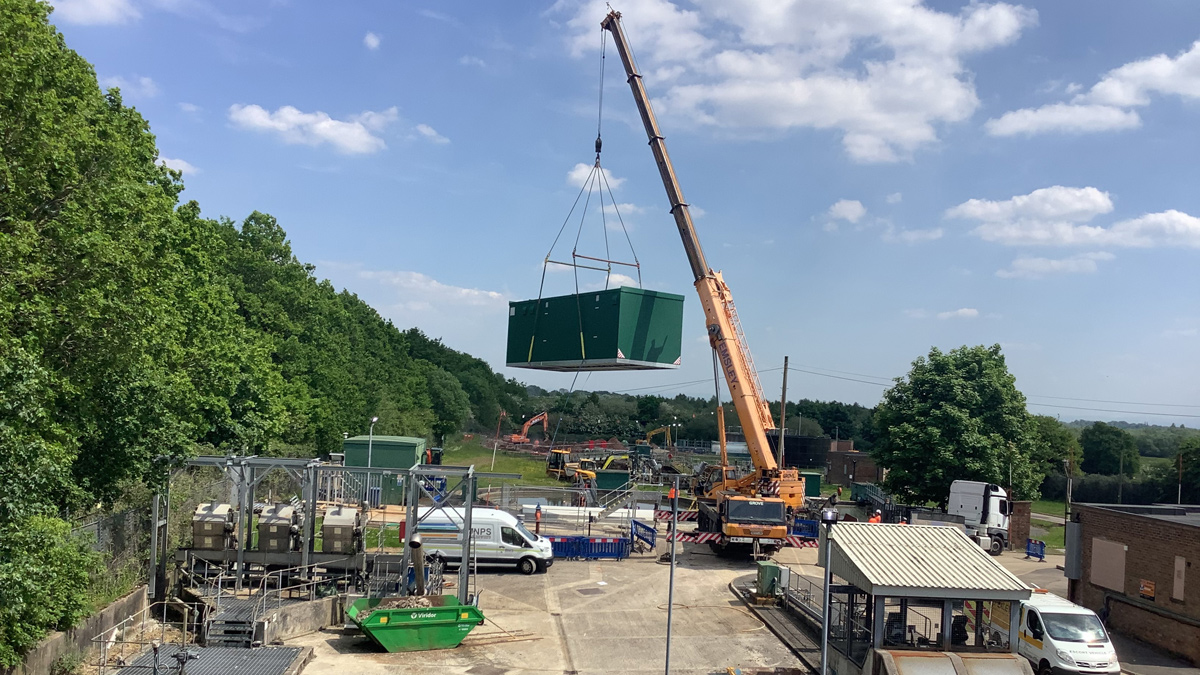
Tyldesley WwTW ferric dosing unit installation – Courtesy of Advance-plus
Worsley WwTW: FtFT 12,010m3/d: Total P permit: 0.5 mg/l
Treatment is via settlement and activated sludge process, after secondary settlement the treated wastewater is pumped to a BAFF plant and discharged to Astley Brook, which is a tributary of the River Glaze. The project scope includes new primary ferric dosing equipment, refurbishment/replacement of existing ferric dosing equipment for secondary dosing, additional sludge storage and mixing facilities, provision of caustic dosing for alkalinity correction, provision of on-site storm detention tank and associated pumping station and asset renewal of existing primary settlement tank de-sludge pumps. Anticipated completion is 1 March 2022.
Bury WwTW: FtFT 203,904m3/d: Total P permit: 0.4 mg/l
Treatment is via settlement and activated sludge process, after secondary settlement the treated wastewater is pumped to a BAFF and discharged to the River Irwell. The project scope is for the provision of new primary and secondary ferric dosing equipment, and replacement of existing rectangular primary tank scraper bridges and rail systems. Anticipated completion is 30 March 2022 for the chemical dosing plant, and 1 August 2022 for the replacement primary settlement tank bridges.
Rochdale WwTW: FtFT 116,986m3/d: Total P permit: 0.4 mg/l
The works is a large conventional activated sludge plant treating domestic and commercial flows. It includes storm overflow and settlement, screening and grit removal, primary settlement followed by ASP incorporating conventional final settlement tanks, there is no dedicated tertiary treatment. The project scope is for the provision of new primary and secondary ferric dosing equipment. Anticipated completion is 17 September 2021.
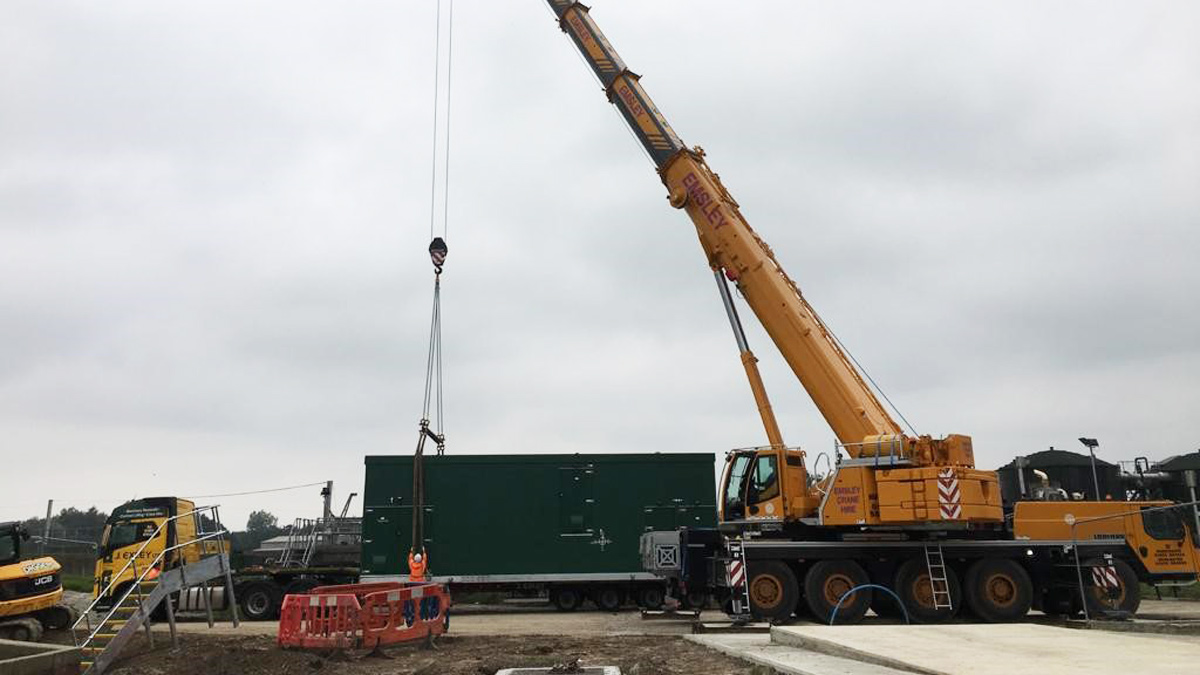
Tyldesley WwTW ferric dosing unit installation – Courtesy of Advance-plus
Tyldesley WwTW: FtFT 16,243m3/d: Total P permit: 0.8 mg/l
Serving the metropolitan area of Wigan, treatment is via settlement and biological filters, after secondary settlement the treated wastewater is pumped to a NTF plant for ammonia removal, then to a COUF plant and discharged to the river. The scope of works is for new primary ferric dosing equipment, additional sludge storage and mixing facilities, provision of caustic dosing for alkalinity correction and new FtFT flow control. The anticipated completion date is 2 February 2022.
Chorley WwTW: FtFT 80,006m3/d: Total P permit: 0.4 mg/l
The works is a large conventional activated sludge plant treating domestic and commercial flows. The works includes storm overflow and settlement, screening and grit removal, primary settlement followed by ASP incorporating conventional final settlement tanks, tertiary solids removal is provided for the secondary settled effluent through a rapid gravity filter. The scope of works here is for the provision of new primary and secondary ferric dosing equipment, additional sludge storage and mixing facilities, odour control and provision of caustic dosing for alkalinity correction. Works should be completed by 30 March 2022.
Phased delivery approach
The notional solution for the five projects contained in the PREP Batch was chemical treatment of the effluent, and tertiary treatment to achieve the required phosphorus consent levels. Following a review of the existing treatment processes by United Utilities, a phased delivery approach was proposed as it became clear that upgrades to the existing chemical dosing systems allied with other plant improvements could meet the consent levels, negating the need for tertiary treatment. Therefore, a two phase approach has been adopted. The first phase of the works was programmed to provide new or upgrades to the existing chemical dosing systems on each site. If proven successful, the requirement for tertiary treatment will be removed from the final solution, which could provide a significant cost saving across the five projects (circa £1m per project).
To support the plan, collaborative planning sessions were undertaken to create a programme that would allow the chemical treatment to be commissioned first and tested to ensure the consent was achieved, but allow time for the installation of tertiary treatment should there be any issues.
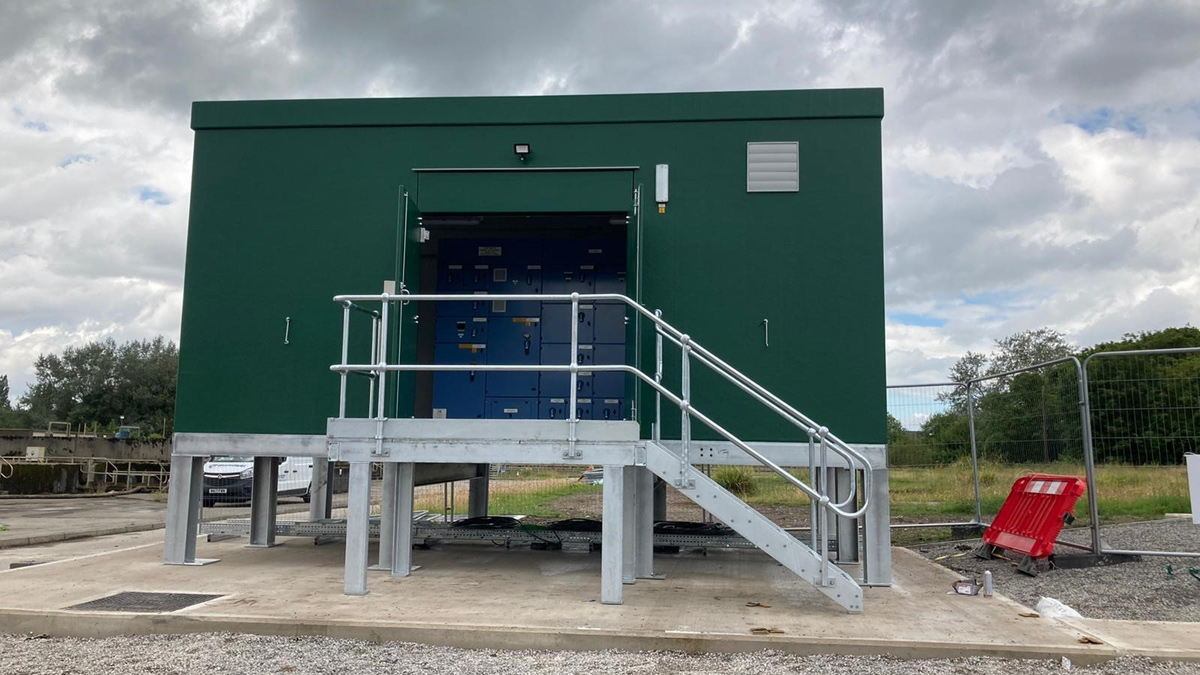
Bury WwTW PST MCC DfMA solution – Courtesy of Advance-plus
Phosphorus Removal Enhancement Programme: Supply chain – key participants
- Project delivery: Advance Plus
- MWH Treatment
- J Murphy & Sons
- Stantec UK
- Dosing equipment: Northern Pump Suppliers Ltd (NPS)
- Sludge storage tanks: Stortec Engineering Ltd
- Systems integrators: Tata Consultancy Services (TCS)
- Systems integrators: Cougar Automation Ltd
- MCCs: Lloyd Morris Electrical Ltd
- MCCs: BGEN
- PST bridges at Bury WwTW: JK Fabrications Ltd
Design templating
As the AMP7 delivery programme needed to move at pace, the decision was made to develop a template solution on early projects, known as donor projects and then utilise the template on the remaining recipient projects.
The PREP Batch’s delivery schedule made it both a donor project for some assets and a recipient project for other assets. Chemical dosing equipment was a key focus for templating with other asset types of sludge storage, pumping stations, MCC kiosks, sampling systems and ICA equipment all areas for template development.
A key principle of the templating effort was the need to ensure that once a template had been developed, it had client support from an engineering, operations and maintenance perspective.
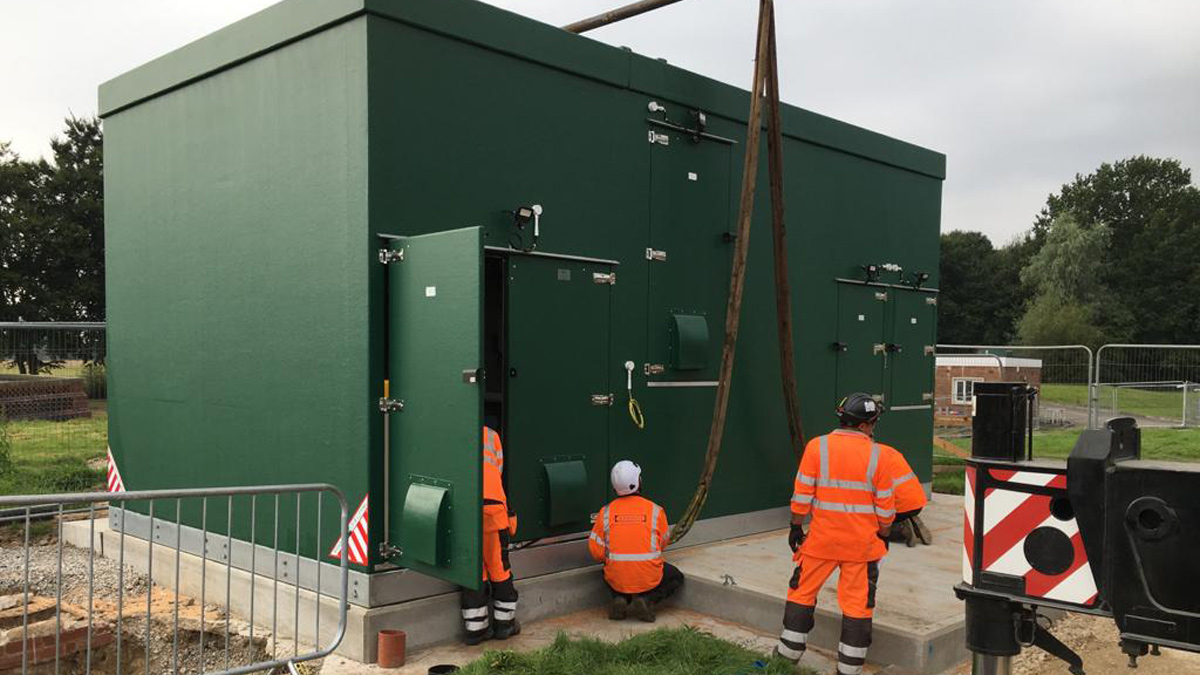
Tyldesley WwTW caustic dosing unit – Courtesy of Advance-plus
The approach taken was to take early designs outside the project environment and review them in a joint forum made up of the clients’ design leads, contractor’s designers and supply chain representatives. The designs were then reviewed by representatives for the Operations and Maintenance community and any comments incorporated. These designs were then locked down for reuse.
Using this approach had several benefits:
- Working with the client’s design leads, Advance-plus were able to discuss and challenge asset standards which led to a number of agreed deviations making significant savings against the budget. These discussions were underpinned by a joint desire to ensure the designed assets were operable and maintainable with a common sense approach.
- Advance-plus, working collaboratively with C2V+ (United Utilities other construction delivery partner) brought shared ideas, shared effort and ensured that the template outputs would be delivered across the whole AMP7 programme. This would ultimately benefit United Utilities with common assets across their region.
- Supply chain input also ensured that the designs being developed were deliverable, with the supply chain giving excellent advice on the most effective way to deliver an idea.
- Operations and Maintenance team input ensured Advance-plus were able to fine tune the details of operability and maintainability and gave the final agreement to the templates. The templates could then be reused in the knowledge that they had everyone’s support.
- Once a template was agreed, multiple units would be delivered which meant Advance-plus were able to give the supply chain workload visibility and the ability to forward plan manufacturing.
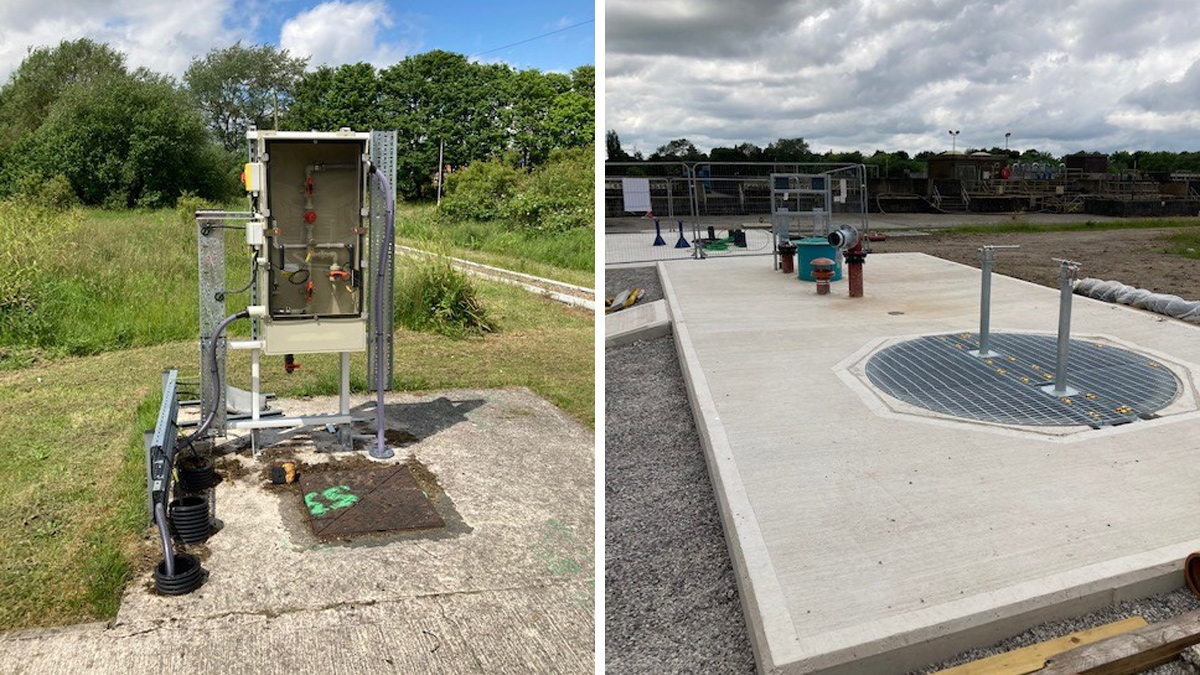
Bury WwTW – (left) template POA arrangement and (right) valve chamber and spill tank – Courtesy of Advance-plus
The PREP Batch benefited from the work provided by other donor projects for chemical dosing, with the whole dosing area being developed including, storage, dosing equipment, tanker area, blind tank, showers, hose reels etc. The donor project developed the total design solution from P&ID’s, layouts through to ICA requirements. The solution for large external tank ferric and caustic dosing (smaller size dosing rigs are delivered within a kiosk solution) were reviewed by the joint team, with a significant focus on the layout of the storage area.
Northern Pump Suppliers (NPS), one of United Utilities framework suppliers for chemical dosing equipment, supported the design development of the template bringing a wealth of experience to the discussions. Also, by having the United Utilities’ design leads involved, clarity on specification requirements could quickly be discussed and approach agreed, with NPS able to confirm how the solution would be delivered.
The PREP Batch was therefore able to take all this design effort and implement it across the projects within the batch. This significantly reduced the timescales and effort needed to develop this batch of work. Furthermore, the supply chain for the majority of the equipment needed was already in place with purchase agreements. This again improved the ability to deliver this element of work reducing the time taken.
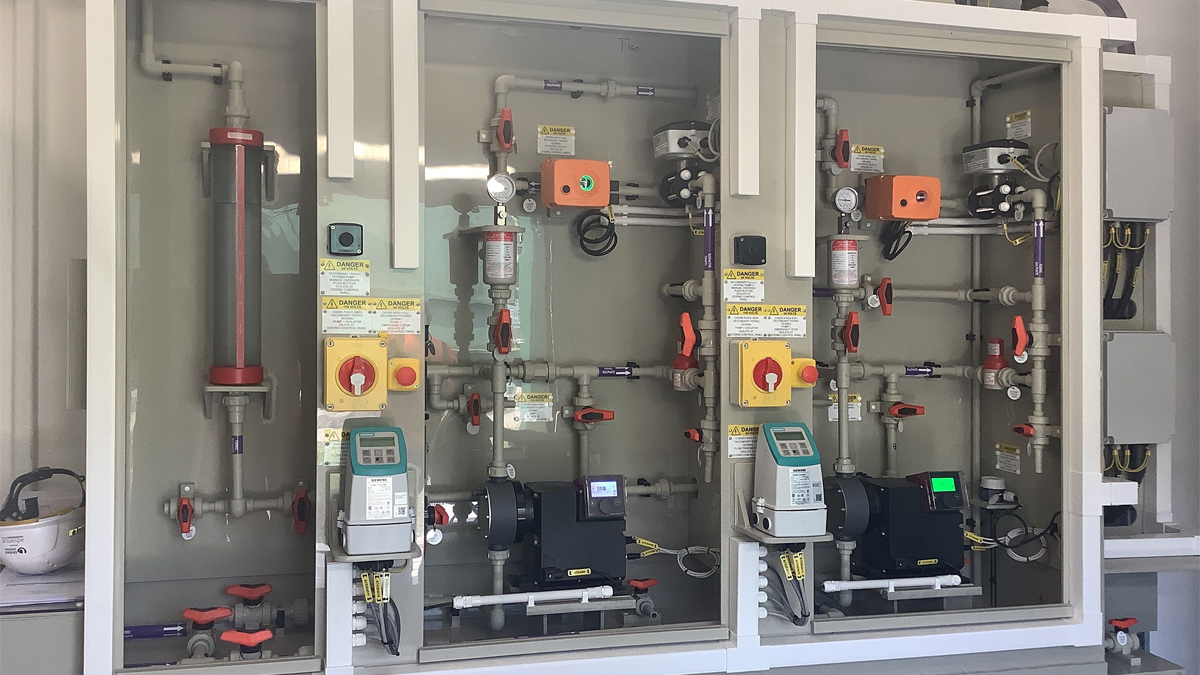
Rochdale secondary dosing – Courtesy of Advance-plus
Areas of development that the PREP Batch provided as a donor project
Two key areas of development that the PREP Batch provided as a donor project were sludge storage and MCC kiosks.
Sludge storage
Through collaborative meetings, a number of solutions were put forward by both construction delivery partners. The need for access to the top of sludge storage tanks became a key area of focus. The discussions centered on the reason for access stairs to the top of the tank. It transpired that this access was required solely to maintain the ultrasonic level instrumentation at the top of the tank, so the team got to work to establish if something different could be done.
The electrical engineers liaised with the supply chain and established that a radar or vibronic instrument would fulfil the same duty and more importantly the instruments do not need direct access for maintenance and can be tested and calibrated remotely. This allowed the staircase to be removed, which brought about significant savings to the delivery of this asset type. This solution is now being utilised on other projects across the programme.
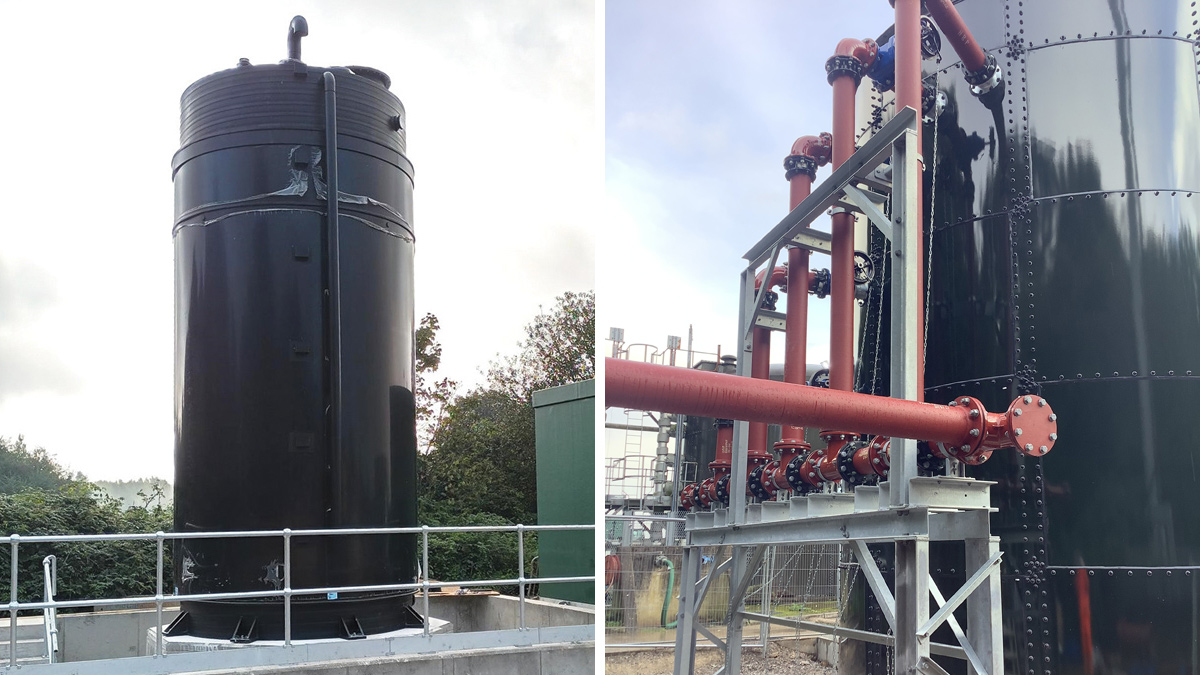
(left) Worsley WwTW caustic dosing and (right) sludge storage tank from Stortec Engineering Ltd at Worsley – Courtesy of Advance-plus
MCC kiosks
The PREP Batch supported the development of a modularised MCC kiosk solution. Early in the programme of work it was recognised that the majority of the MCCs would be a similar layout. Advance-plus engaged MCC framework suppliers Lloyd Morris Electrical Ltd, to establish a principle for a range of standard layout and sizing of MCCs and kiosks.
Furthermore, Advance-plus required off site manufacturing to be undertaken wherever possible, and wanted the MCC delivered in its kiosk fully tested. Using the PREP Batch as the donor, Lloyd Morris Electrical Ltd developed a range of sizes for small, medium and large kiosk requirements. As the MCC and kiosk are built on a transportable base, and to minimise on site works, the MCCs have been raised off the ground therefore negating the need for full concrete bases with cable trenches.
Overall, the templating approach is bringing benefits to the PREP Batch and across the programme. United Utilities has a consistent asset across the region making operator and maintenance familiarity better. Significant efficiency advantages are being seen in this approach which is supporting United Utilities’ aspirations to deliver the best whole life cost solutions.
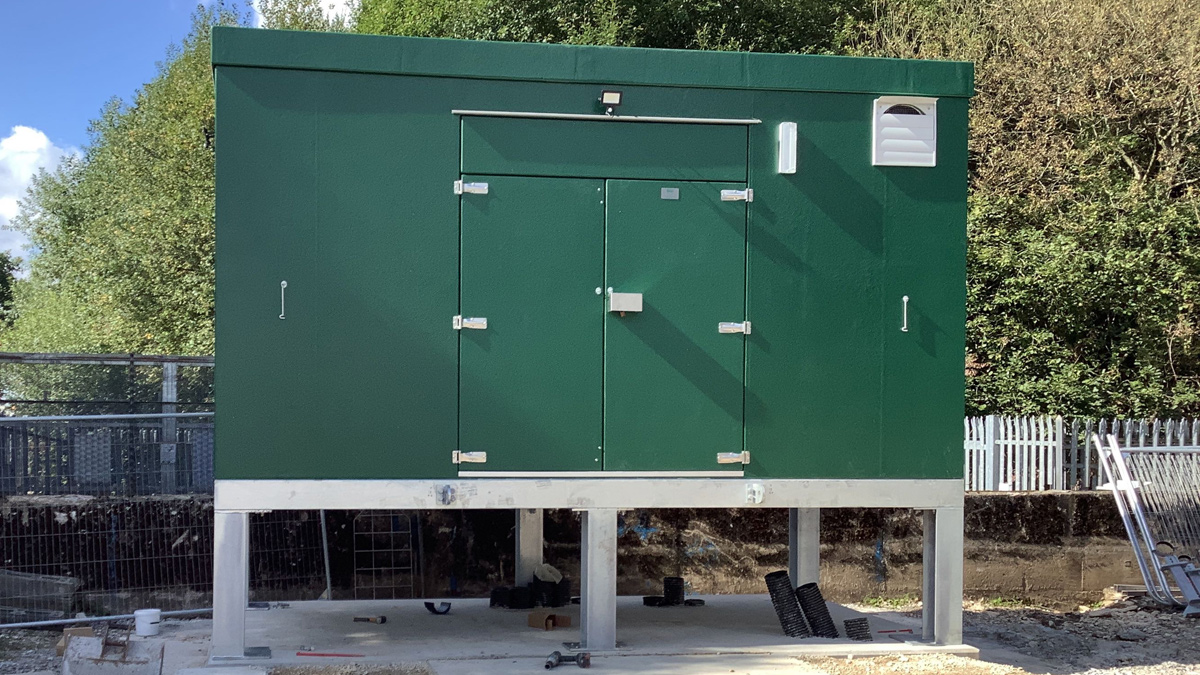
Worsley WwTW sludge MCC DfMA assembly – Courtesy of Advance-plus
Progress update
At the time of writing (September 2021), the design has been completed for all five sites, and each are now at various stages of construction, commissioning and optimisation.
At Bury and Rochdale WwTWs, the ferric dosing systems have been installed and commissioned and both are in the optimisation period. Both Worsley and Tyldesley WwTWs are in the construction phase, with civils construction complete and M&E installations are underway. Demolition work has commenced at Chorley WwTW.
All projects are tracking to programme with the ability to establish if the phased delivery approach is working on programme.


